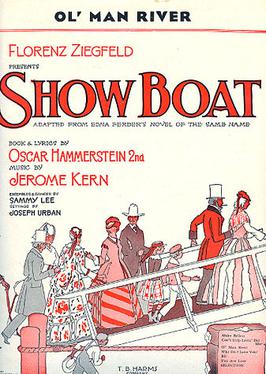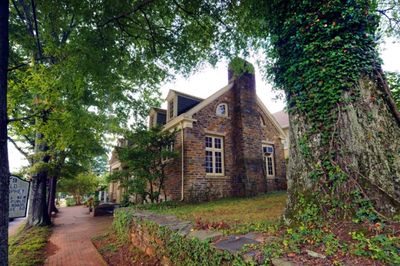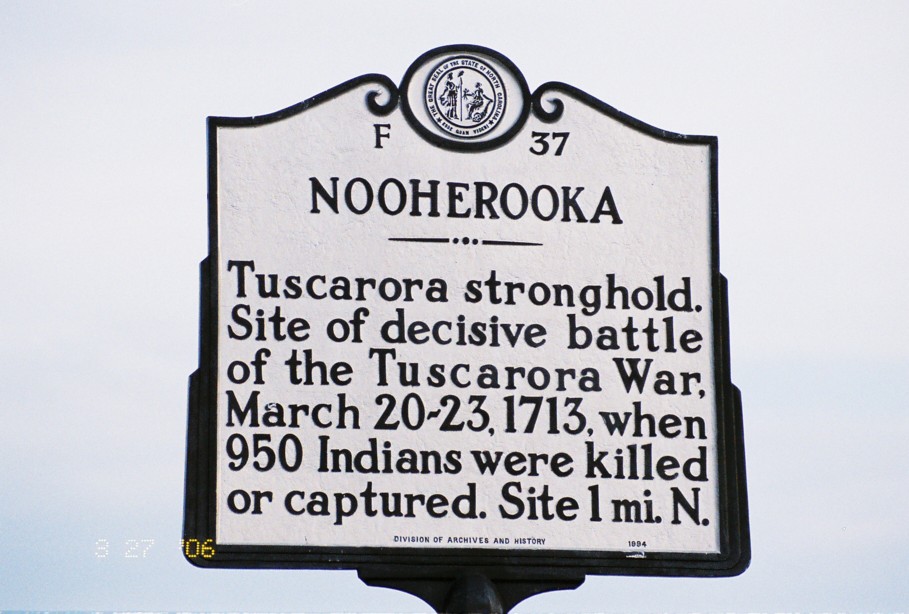In eastern North Carolina, Beaufort County in particular, you’ll find the small town of Bath. Measuring just under a square mile and home to just 249 people as of the 2010 census, Bath is an unassuming little hamlet that proudly holds the title of “North Carolina’s Oldest Town.”
Incorporated in 1705, Bath is home to the oldest standing Episcopal Church in North Carolina – and four other locations on the National Register of Historic Places. The town is also host to Atlantic pirate legends aplenty, as notorious pirate Edward Teach – better known as Blackbeard – settled there for a time in 1718. But Blackbeard and old buildings aren’t Bath’s only claim to fame: the town also inspired the stage show that is generally recognized as the first modern musical.
 Written by Jerome Kern and Oscar Hammerstein II, “Show Boat” premiered on Broadway in 1927. The play incorporated serious themes and comedic follies, showtunes and somber melodies, and became a turning point in American musical theater. The production was based on a novel written by Edna Ferber, who spent several weeks aboard the “James Adams Floating Palace Theatre” as it floated on Bath Creek in 1925.
Written by Jerome Kern and Oscar Hammerstein II, “Show Boat” premiered on Broadway in 1927. The play incorporated serious themes and comedic follies, showtunes and somber melodies, and became a turning point in American musical theater. The production was based on a novel written by Edna Ferber, who spent several weeks aboard the “James Adams Floating Palace Theatre” as it floated on Bath Creek in 1925.
No awards for Broadway shows existed when “Show Boat” premiered, but its immense commercial and critical success endured over the years, and frequent revivals have won Tony awards and Laurence Olivier Awards alike.
The story of “Show Boat” features an interracial relationship and addresses issues of segregation in the South. Amidst all the songs and fun that a stage play can present, “Show Boat” took time to be serious, and to underline the drama and tension found in real life alongside joy and music. The original production ran over four hours, but was trimmed to just over three – the length that it stayed over its original run of a year and a half, totaling 572 performances. “Show Boat” is recognized as one of the first musical shows to begin the transformation of musical theater from frivolous to facund, and has seen multiple revivals, films, albums, dramas and radio plays following in the footsteps of the original ground-breaking production.
As for the “James Adams Floating Palace Theatre” that provided Ferber’s research material, it ended its run in 1942 after 28 years on the water – but not before getting immortalized in one of the greatest musicals ever written.
Related Stories
‹

Local Lore: Old ChristmasThe Christmas holiday has more or less been the same for the past couple hundred years, drawing celebration inspiration from Christian and pagan tradition alike to create the season as we know it today. But in coastal North Carolina, you’ll likely find a few people still celebrating Christmas as it once was — before the […]

This is Tourism: The Orange County Historical MuseumFirst founded in 1952, the history of Orange County is long and rich. Here you’ll find the home of one of the first two NASCAR tracks, a planetarium that trained some of America’s first astronauts and — of course — the nation’s first state-supported university. You’ll also find the Orange County Historical Museum, where some […]

One on One: The Tuscarora War’s Dirty SecretThere is a secret about North Carolina’s early colonial days, something even more disturbing and horrifying than traditional slavery. I learned about it reading UNC-Wilmington professor David La Vere’s “The Tuscarora War: Indians, Settlers, and the Fight for the Carolina Colonies.” That book interested me because I want to learn more about the 18th-century explorer, […]

Local Lore: Winter Weather RecordsWhile not a reliable home for a white Christmas, North Carolina is well-known for a variety of other weather patterns. From hurricane season to hot summers, the Old North State never fails to surprise with weather variations between the mountains, the Piedmont and the coast. In fact, this year, Hurricane Florence shattered the previous record […]
![]()
Bookwatch returns with authors who were worth waiting forThose who missed North Carolina Bookwatch on UNC-TV while it has been off the air to make room for “Festival’s” special programming can look forward to this Sunday afternoon at five o’clock. Bookwatch returns with an encore lineup of books, authors, and characters. It all begins next Sunday with Rachel, the blue-eyed child of a […]
![]()
New books and a new BookwatchUNC-TV’s North Carolina Bookwatch begins a new season on Friday, August 5, at 9:30 p.m., and Sunday, August 7, at 5 p.m. My editors let me share with you my reading suggestions. They know that the suggestions parallel exactly upcoming Bookwatch shows. Because earlier columns have already discussed several books on the list, […]
![]()
Why do North Carolinians love pirates so much?Pirates in North Carolina again? Yes, we remember Black Beard. Most authorities now agree that the shipwreck we thought was Black Beard’s Queen Anne’s Revenge is just that. The big news about the recovery of the ship’s anchor has us talking about pirates again. The new “Pirates of the Caribbean” movie, although not as big […]

On the Porch: Dr. Jim Crawford - October News RoundupThis Week:
Born into a blue collar and agricultural clan in rural Pennsylvania, Dr. Jim Crawford was the first in his family to graduate from college. Earning his PhD from the University of North Carolina, he taught US and World History at several universities in the piedmont North Carolina for several decades. He served as chairman of the Chatham County board of commissioners, and currently serves as trustee for Central Carolina Community College. He is a firm believer in American democracy and trusts that the constitution will hold firm now as it has in past crises despite the broken, distempered electorate.

North Carolina Adopts New Trump-Backed US House Districts Aimed at Gaining a Republican SeatWritten by GARY D. ROBERTSON RALEIGH, N.C. (AP) — North Carolina Republican legislative leaders completed their remapping of the state’s U.S. House districts on Wednesday, intent on picking up one more seat to help President Donald Trump’s efforts to retain GOP control of Congress in next year’s midterm elections. The new boundaries approved by the […]

Democrats Look to Long Term as North Carolina GOP Redistricting Plan Seeks Another Seat for TrumpDemocrats rallied Tuesday against a new U.S. House map proposed by North Carolina Republicans that would likely reap another GOP seat.
›
 Written by Jerome Kern and Oscar Hammerstein II, “Show Boat” premiered on Broadway in 1927. The play incorporated serious themes and comedic follies, showtunes and somber melodies, and became a turning point in American musical theater. The production was based on a novel written by Edna Ferber, who spent several weeks aboard the “James Adams Floating Palace Theatre” as it floated on Bath Creek in 1925.
Written by Jerome Kern and Oscar Hammerstein II, “Show Boat” premiered on Broadway in 1927. The play incorporated serious themes and comedic follies, showtunes and somber melodies, and became a turning point in American musical theater. The production was based on a novel written by Edna Ferber, who spent several weeks aboard the “James Adams Floating Palace Theatre” as it floated on Bath Creek in 1925.








